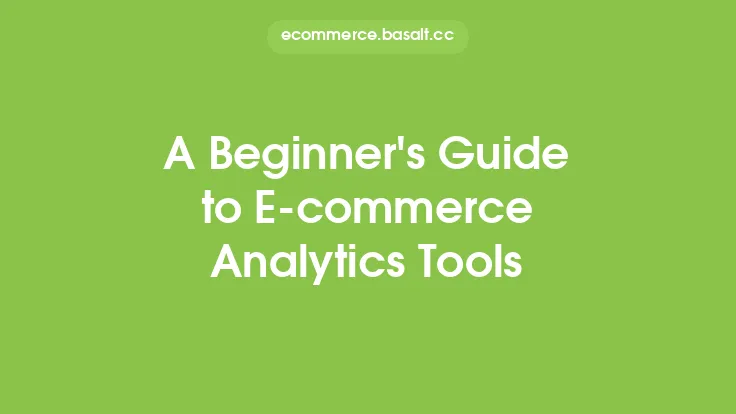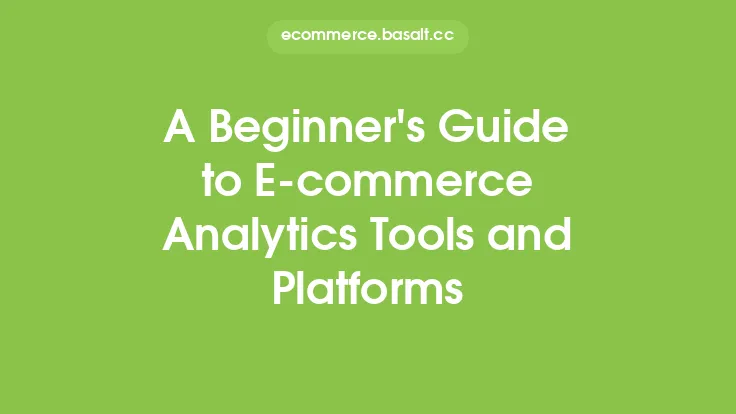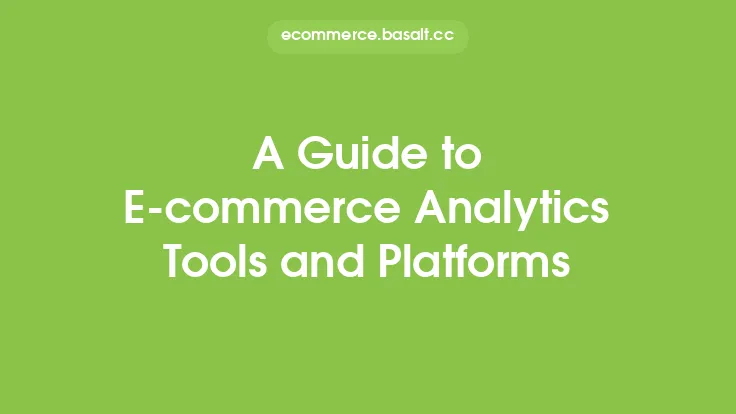Getting started with e-commerce analytics can be a daunting task, especially for those who are new to the world of online retail. With so many metrics, tools, and platforms available, it's easy to feel overwhelmed and unsure of where to begin. However, understanding e-commerce analytics is crucial for any online business looking to succeed in today's competitive market. In this article, we'll take a closer look at the fundamentals of e-commerce analytics, exploring what it is, why it's important, and how to get started with tracking and analyzing your online store's performance.
What is E-commerce Analytics?
E-commerce analytics refers to the process of collecting, analyzing, and interpreting data related to your online store's performance. This includes data on website traffic, customer behavior, sales, revenue, and other key metrics that can help you understand how your business is performing and identify areas for improvement. E-commerce analytics involves using tools and techniques to turn data into actionable insights that can inform business decisions and drive growth.
Why is E-commerce Analytics Important?
E-commerce analytics is important because it allows you to make data-driven decisions about your online business. By tracking and analyzing key metrics, you can gain a deeper understanding of your customers, their behavior, and their needs. This information can be used to optimize your website, improve the customer experience, and increase sales and revenue. Without e-commerce analytics, you're essentially flying blind, making decisions based on intuition rather than facts. By leveraging data and analytics, you can reduce the risk of making costly mistakes and increase the chances of success.
Key Concepts in E-commerce Analytics
There are several key concepts that are essential to understanding e-commerce analytics. These include:
- Metrics: These are the individual measurements that are used to track and analyze performance. Examples of metrics include website traffic, conversion rate, average order value, and customer lifetime value.
- Dimensions: These are the categories or attributes that are used to segment and analyze data. Examples of dimensions include location, device type, and product category.
- Segments: These are groups of customers or visitors that share common characteristics or behaviors. Examples of segments include first-time buyers, repeat customers, and customers who have abandoned their shopping carts.
- Funnel analysis: This involves analyzing the steps that customers take as they move through the buying process, from initial awareness to conversion.
- Cohort analysis: This involves analyzing groups of customers who share common characteristics or behaviors over time.
How to Get Started with E-commerce Analytics
Getting started with e-commerce analytics is easier than you think. Here are some steps to follow:
- Set up a web analytics tool: Google Analytics is a popular and free tool that can help you track and analyze website traffic, behavior, and conversion rates.
- Define your goals and objectives: What do you want to achieve with your online business? What metrics are most important to you?
- Track key metrics: Start tracking key metrics such as website traffic, conversion rate, average order value, and customer lifetime value.
- Analyze and interpret data: Use tools and techniques to analyze and interpret your data, identifying trends, patterns, and areas for improvement.
- Take action: Use your insights to inform business decisions and drive growth.
Common Challenges in E-commerce Analytics
While e-commerce analytics can be a powerful tool for driving growth and improvement, there are several common challenges that online businesses face. These include:
- Data quality issues: Poor data quality can make it difficult to trust your insights and make informed decisions.
- Tool and platform overload: With so many tools and platforms available, it can be difficult to know which ones to use and how to integrate them.
- Lack of resources: E-commerce analytics requires time, money, and expertise, which can be a challenge for small or resource-constrained businesses.
- Information overload: With so much data available, it can be difficult to know what to focus on and how to prioritize your efforts.
Best Practices for E-commerce Analytics
To get the most out of e-commerce analytics, it's essential to follow best practices. These include:
- Keep it simple: Don't try to track too many metrics or analyze too much data. Focus on the key metrics that matter most to your business.
- Use data to tell a story: Don't just present data as numbers or charts. Use it to tell a story about your business and your customers.
- Take a customer-centric approach: Remember that e-commerce analytics is about understanding your customers and their needs. Use data to inform decisions that will improve the customer experience.
- Continuously monitor and improve: E-commerce analytics is an ongoing process. Continuously monitor your data, analyze your insights, and make improvements to your business.
Conclusion
E-commerce analytics is a powerful tool for driving growth and improvement in online businesses. By understanding the fundamentals of e-commerce analytics, including key concepts, metrics, and best practices, you can make data-driven decisions that will help you succeed in today's competitive market. Remember to keep it simple, use data to tell a story, take a customer-centric approach, and continuously monitor and improve. With the right approach and tools, you can unlock the full potential of e-commerce analytics and take your online business to the next level.




